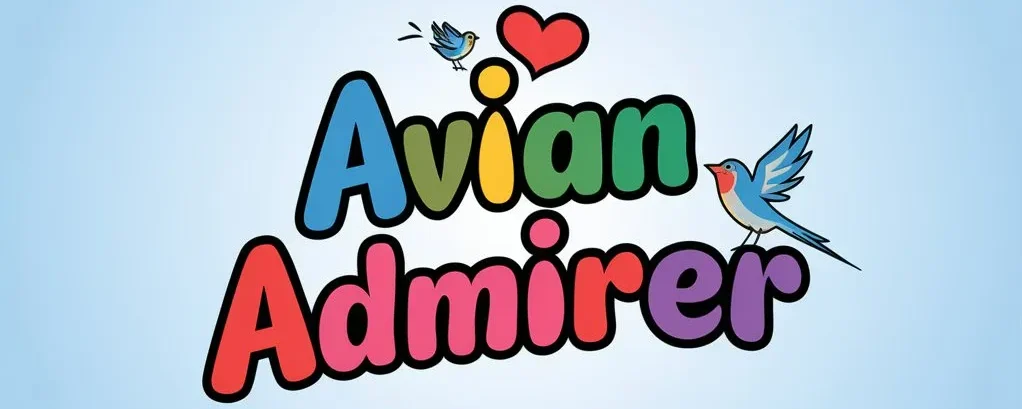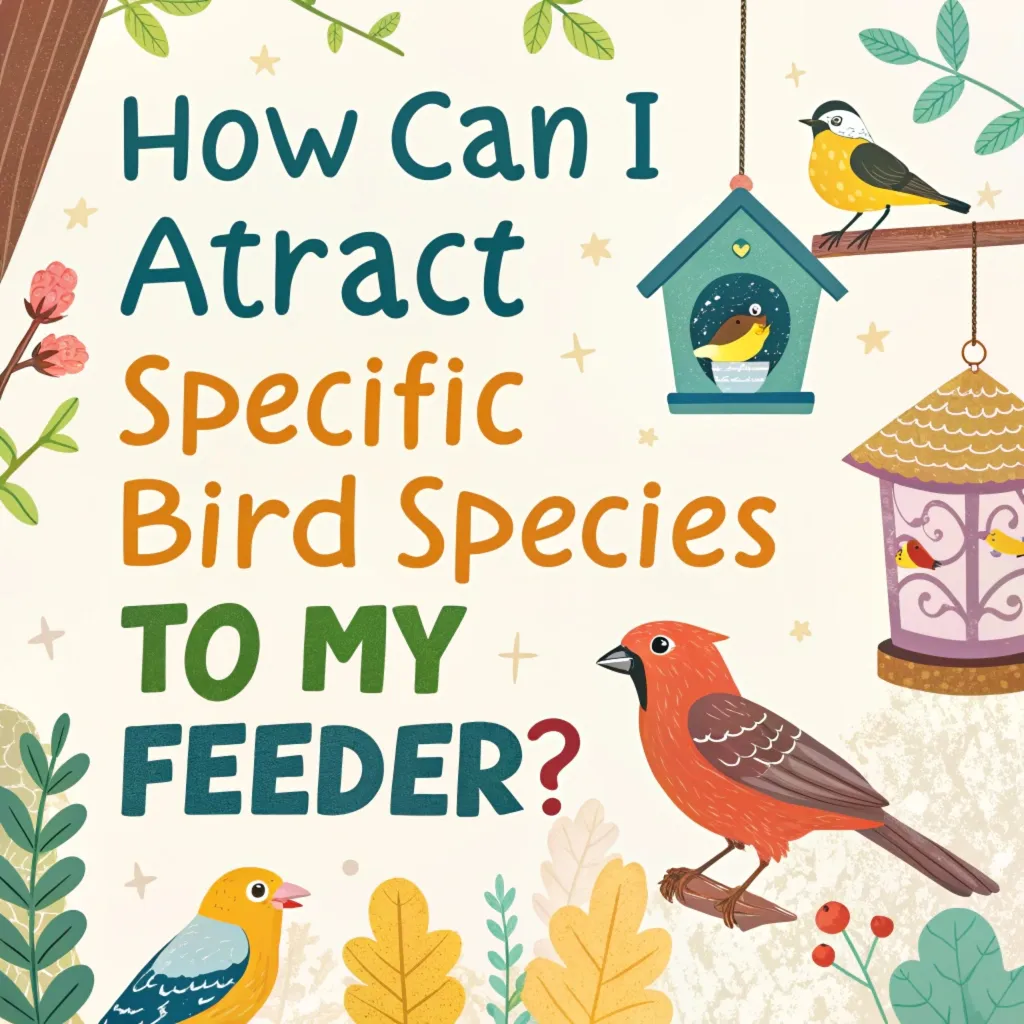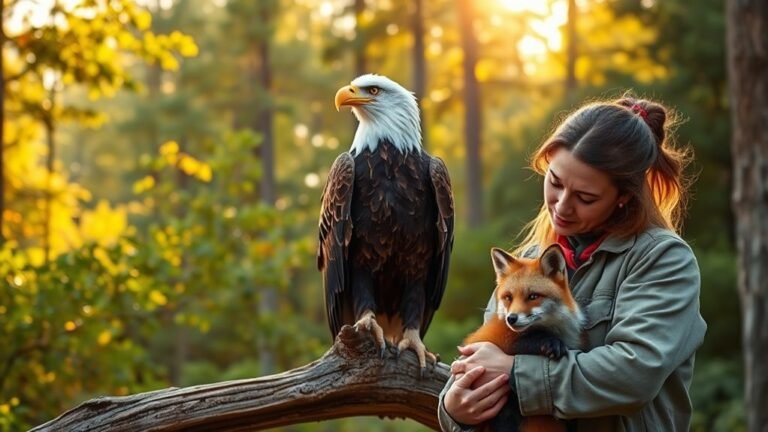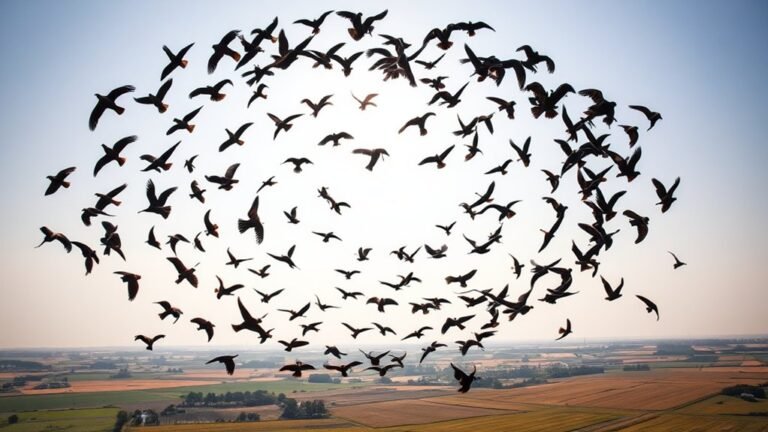How Can I Attract Specific Bird Species to My Feeder?
Have you ever wanted to see more birds in your backyard? Maybe you dream of watching colorful cardinals or hearing the sweet songs of chickadees. Good news! You can make your yard a favorite spot for different kinds of birds.
This guide will show you how to invite specific birds to your feeder. It’s like throwing a party and choosing who to invite, but for birds!
We’ll learn about the best foods to offer, where to put feeders, and how to make your yard bird-friendly. Get ready to become a bird expert and turn your backyard into a bird paradise!
Key Takeaways
- Feeder selection matters: Different bird species prefer specific feeder types
- Food variety attracts diversity: Offer a range of seeds, fruits, and insects to appeal to various birds
- Feeder placement is crucial: Position feeders at appropriate heights and near suitable habitats
- Water features attract birds: Moving water sources draw in a wider variety of species
- Native plants complement feeders: Incorporate bird-friendly landscaping to create a natural habitat
- Consistency is key: Regular feeding and maintenance encourage repeat visits
- Seasonal adjustments help: Adapt your feeding strategy throughout the year
- Safety considerations: Protect birds from predators and window collisions
- Cleanliness prevents disease: Regular feeder cleaning maintains bird health
- Patience pays off: Allow time for birds to discover and frequent your feeders
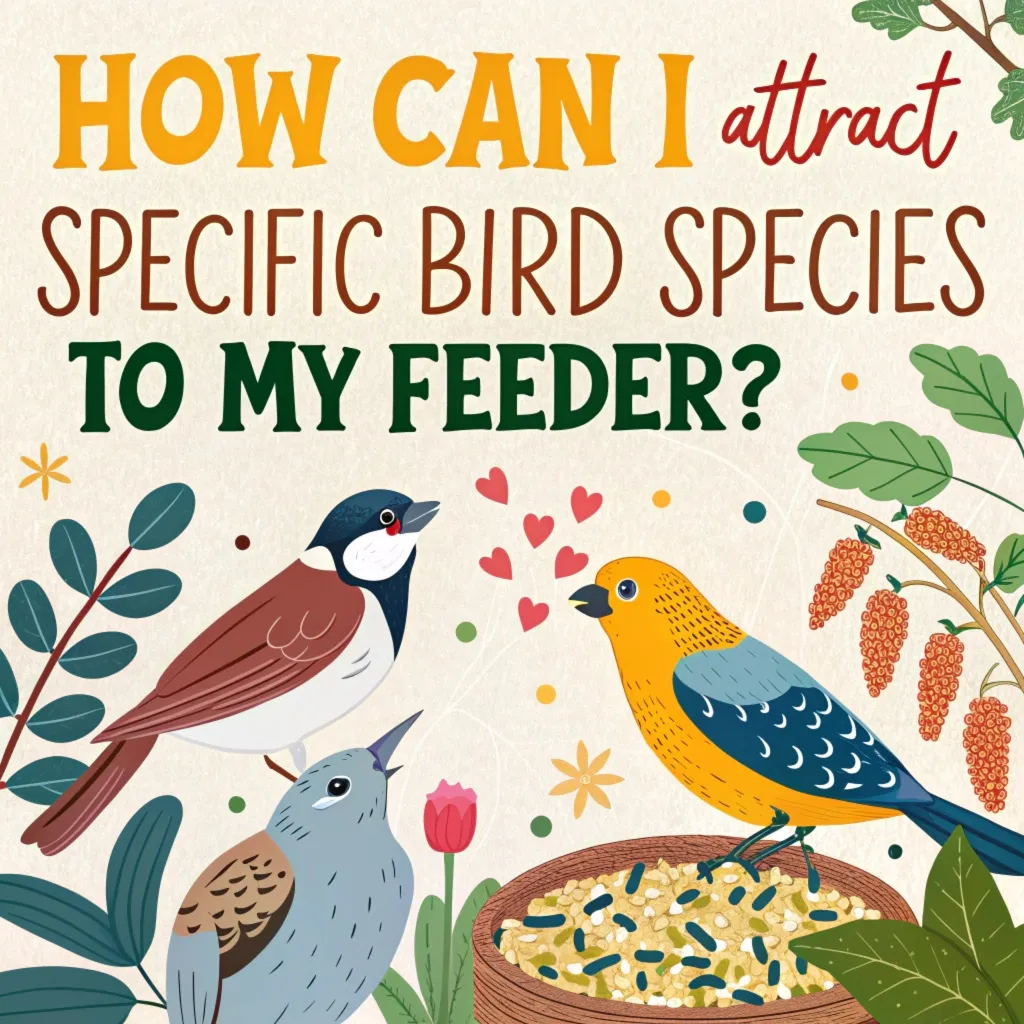
Choose the Right Feeder Type
Selecting appropriate feeders is crucial for attracting specific bird species. Different birds have unique feeding habits and preferences:
- Tube feeders: Attract finches, chickadees, and titmice
- Platform feeders: Draw in cardinals, jays, and sparrows
- Suet feeders: Entice woodpeckers, nuthatches, and wrens
- Nyjer feeders: Specifically designed for goldfinches and siskins
- Hummingbird feeders: Essential for attracting these tiny, nectar-loving birds
Feeders come in many shapes and sizes, just like birds do. Some feeders are long tubes with small holes. Others are flat platforms where birds can stand and eat.
There are even special feeders that hold sticky food called suet. The type of feeder you choose can make a big difference in which birds come to visit.
For example, woodpeckers like feeders that let them cling and peck, while sparrows prefer open trays where they can hop around.
Offer a Variety of Foods
Providing diverse food options increases your chances of attracting different bird species:
- Black oil sunflower seeds: Appeal to a wide range of birds
- Nyjer seeds: Attract finches and siskins
- Suet: Draw in woodpeckers and nuthatches
- Peanuts: Entice jays, woodpeckers, and titmice
- Mealworms: Attract bluebirds and other insect-eaters
- Fruit: Offer oranges or grape jelly for orioles and tanagers
Birds eat all sorts of things, not just seeds. Some birds love to munch on fruits like berries or apple slices. Others go crazy for insects like mealworms.
And many birds enjoy nuts, especially peanuts. By offering different types of food, you’re like a bird chef creating a tasty menu.
This variety helps attract many kinds of birds to your yard. Remember, what you put out is what you’ll see flying in!
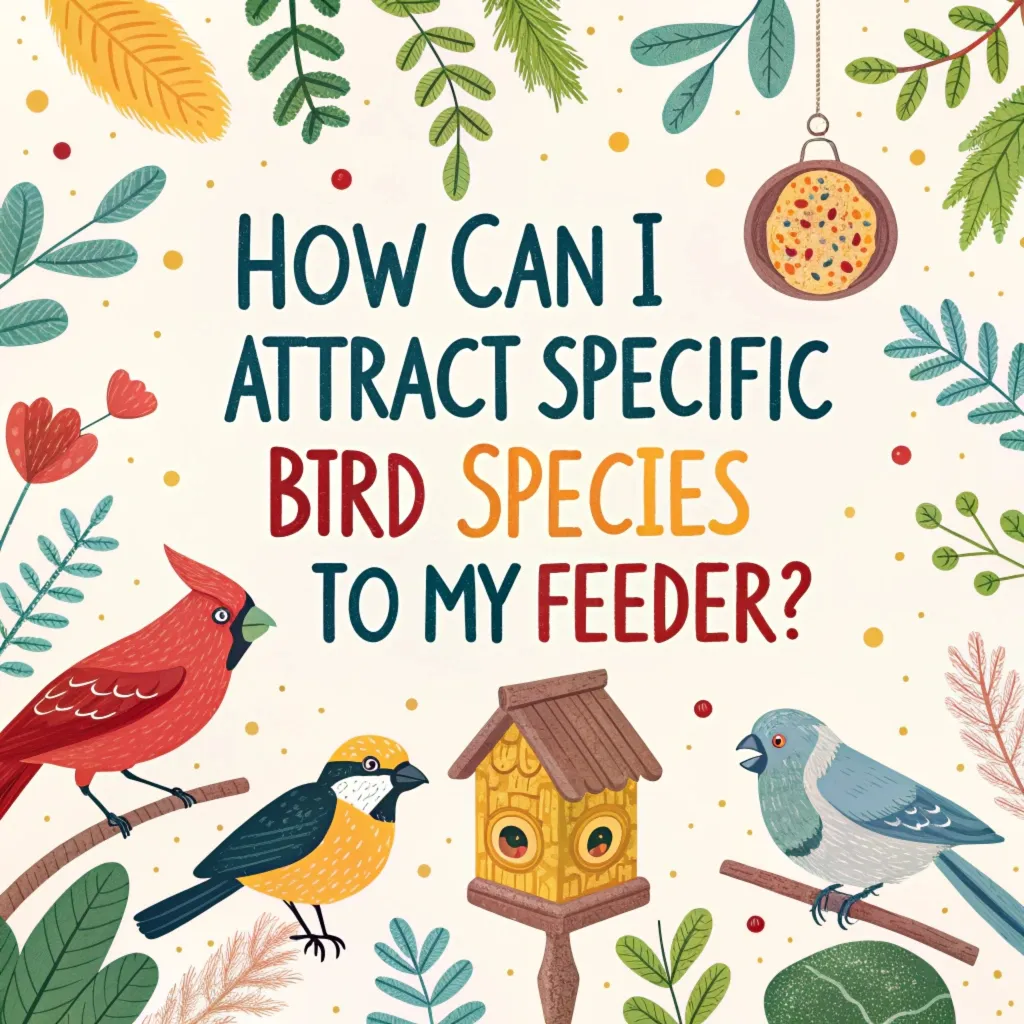
Strategically Place Your Feeders
Feeder placement significantly impacts bird attraction:
- Hang feeders at various heights to accommodate different species
- Position feeders near natural shelter like trees or shrubs
- Place hummingbird feeders 4-6 feet from the ground
- Hang woodpecker feeders at least 10 feet high on trees
Where you put your bird feeders is super important. It’s like choosing the perfect spot for a picnic. Birds like to feel safe when they eat. So, putting feeders near trees or bushes is a good idea.
This gives birds a place to hide if they get scared. Some birds like to eat up high, while others prefer to be closer to the ground. By putting feeders at different heights, you can make lots of birds happy.
Incorporate Water Features
Water sources greatly enhance your yard’s appeal to birds:
- Install a birdbath or shallow water dish
- Add a dripping or moving water feature to attract more species
- Keep water sources clean and filled regularly
Birds need water just like we do. They use it to drink and to take baths. A birdbath in your yard can be like a bird spa! Birds really like moving water.
The sound of dripping or splashing catches their attention. You can make a simple water feature by hanging a container with a small hole above your birdbath.
This will create a drip that birds will love. Remember to keep the water clean and fresh. This will help keep the birds healthy and happy.
Create a Bird-Friendly Landscape
Complement your feeders with natural food sources:
- Plant native trees and shrubs that produce berries or seeds
- Grow nectar-rich flowers for hummingbirds and orioles
- Leave some areas of your yard unmowed for ground-feeding birds
Your yard can be more than just a place with bird feeders. It can be a bird paradise! Planting trees and bushes that grow berries or seeds gives birds natural food.
Flowers that make sweet nectar are like dessert for birds, especially hummingbirds. Some birds like to find food on the ground.
So, leaving a part of your yard a little wild can help these birds. It’s like creating a bird buffet right in your backyard!
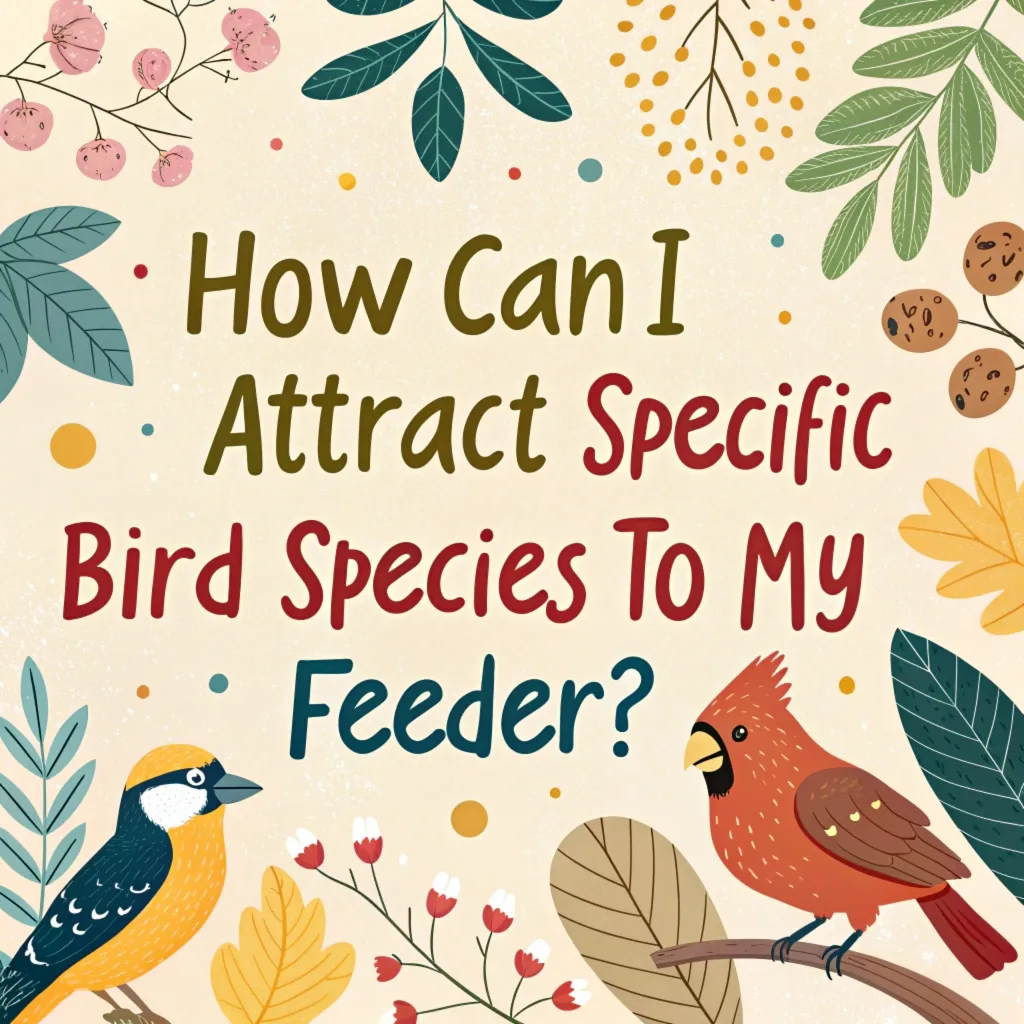
Maintain Consistency in Feeding
Regular feeding encourages birds to return:
- Keep feeders stocked consistently
- Provide food year-round, adjusting types seasonally
- Be patient as birds discover and become accustomed to your feeders
Birds are creatures of habit. If they find a good place to eat, they’ll come back again and again. That’s why it’s important to keep your feeders full. It’s like running a restaurant – you don’t want to run out of food!
Try to fill your feeders at the same time each day. Birds will learn when to expect their meals. Don’t worry if you don’t see many birds at first. It takes time for them to find your feeders and trust that it’s a safe place to eat.
Adjust for Seasons
Adapt your feeding strategy throughout the year:
- Offer high-energy foods like suet in winter
- Provide nesting materials in spring
- Increase water sources during hot summer months
Just like we change what we eat depending on the weather, birds need different foods in different seasons. In winter, birds need food that gives them lots of energy to stay warm.
Foods like suet, which is a type of bird fat, are great for this. In spring, birds are busy building nests. You can help by putting out things like small twigs or pet fur.
During hot summers, birds need extra water. By changing what you offer with the seasons, you’ll keep birds coming to your yard all year round.
Ensure Bird Safety
Create a safe environment for feeding birds:
- Position feeders away from windows to prevent collisions
- Place feeders in areas with quick escape routes from predators
- Use baffles or squirrel-proof feeders to deter non-bird visitors
Keeping birds safe while they eat is very important. Birds can sometimes fly into windows because they see reflections. To help prevent this, put feeders either very close to windows or far away.
This way, birds won’t hurt themselves if they fly away quickly. It’s also good to put feeders near bushes or trees.
This gives birds a place to hide if a cat or hawk comes by. Some feeders have special covers called baffles that keep squirrels out. This helps make sure the bird food is just for the birds!
Keep Feeders Clean
Maintain hygienic feeding stations:
- Clean feeders regularly with a mild bleach solution
- Remove old or wet seed promptly
- Rake up fallen seeds beneath feeders to prevent mold growth
Keeping bird feeders clean is like washing dishes after a meal. It helps keep the birds healthy. Dirty feeders can spread diseases among birds. You should clean your feeders every few weeks. Use a mix of water and a little bleach to kill germs.
Make sure to rinse the feeders well after cleaning. Also, throw away any old or wet seeds. These can grow mold, which is bad for birds.
Cleaning up seeds that fall on the ground is important too. This keeps your yard tidy and helps prevent unwanted visitors like mice.
FAQs
How long does it take for birds to find a new feeder?
It can take anywhere from days to weeks for birds to discover and regularly visit a new feeder. Patience is key as birds explore and become comfortable with the new food source.
What’s the best way to attract hummingbirds?
To attract hummingbirds, use specialized nectar feeders filled with a solution of four parts water to one part white sugar. Place feeders near bright, tubular flowers and maintain cleanliness.
Can I feed birds bread?
Feeding birds bread is not recommended. Bread lacks nutritional value for birds and can lead to malnutrition. Stick to seeds, fruits, and other natural food sources designed for bird health.
How do I keep squirrels away from my bird feeders?
Use squirrel-proof feeders or add baffles to existing feeders. Position feeders away from structures squirrels can jump from, and consider offering separate squirrel feeders to divert their attention.
Should I feed birds year-round?
Yes, feeding birds year-round is beneficial. While natural food sources are available in warmer months, your feeders provide a reliable supplement. Adjust the types of food offered based on seasonal needs.

Ava is a bird enthusiast and nature lover who has spent countless hours observing and learning about the fascinating world of birds. With a passion for sharing her knowledge and inspiring others to appreciate the beauty of birds, Ava writes about her experiences and insights on avianadmirer.com.
